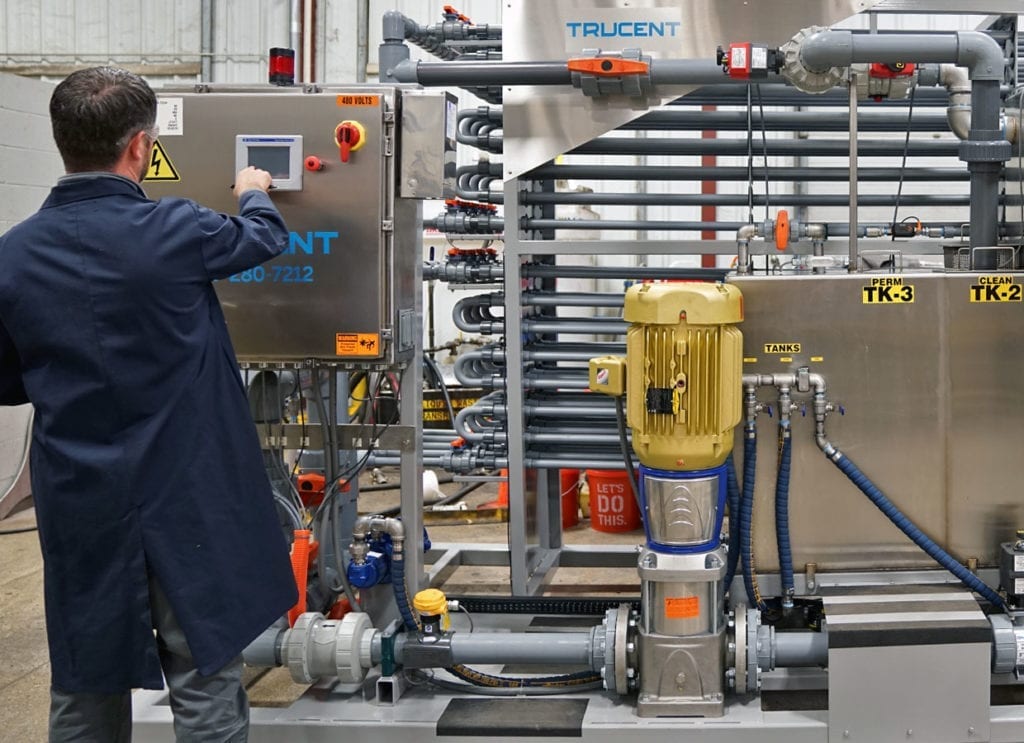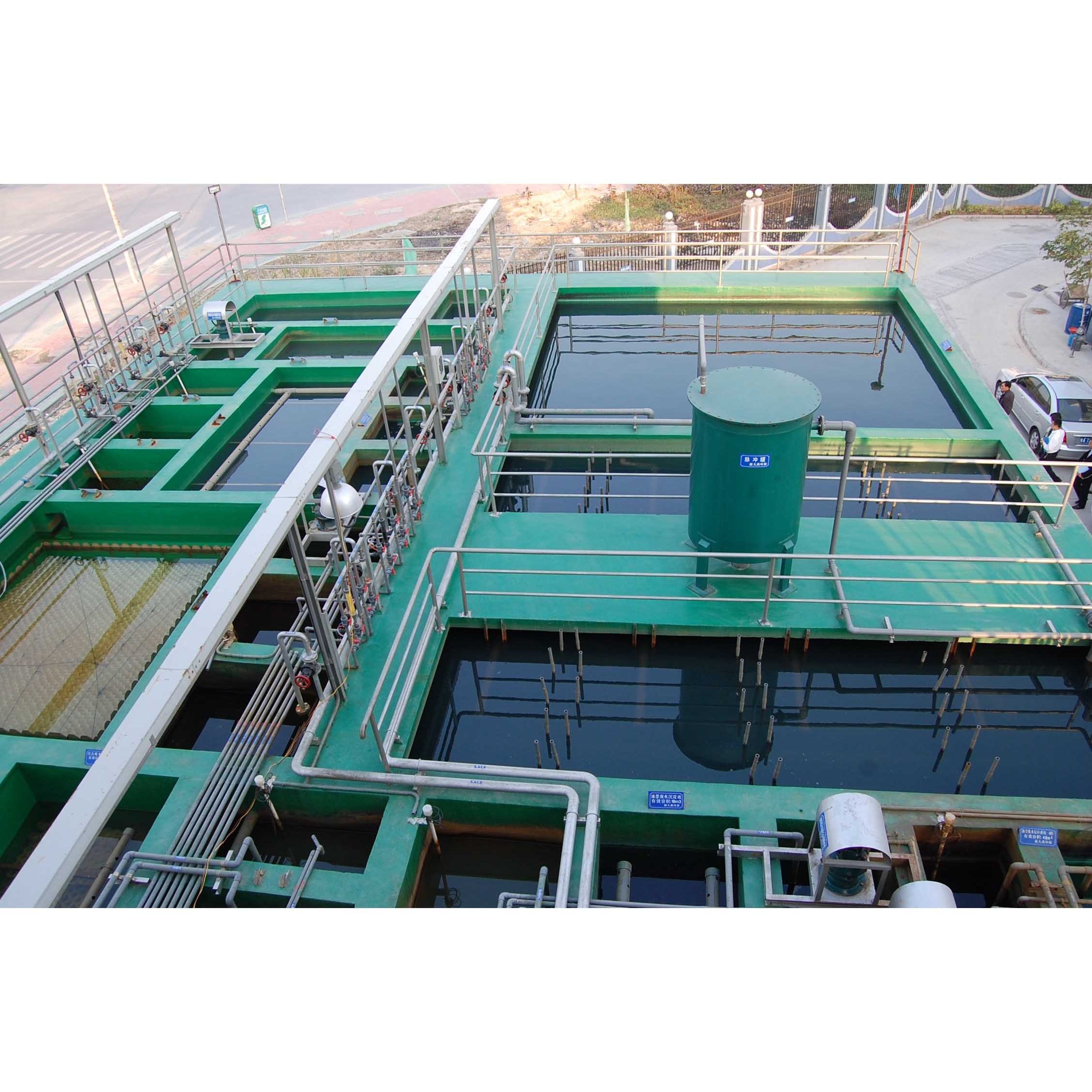Industrial Waste Water Treatment-- Enhance Effectiveness with Custom-made Water Treatment Equipments
Industrial Waste Water Treatment-- Enhance Effectiveness with Custom-made Water Treatment Equipments
Blog Article
Trick Methods in Hazardous Waste Water Treatment Processes
The therapy of industrial wastewater is a vital facet of ecological management, involving a variety of methods created to minimize the influence of contaminants. Developments in technologies such as membrane filtering and advanced oxidation processes provide ingenious options for improving therapy effectiveness.
Physical Therapy Techniques
Exactly how successfully can physical therapy techniques attend to the intricacies of industrial wastewater? Physical treatment methods play a critical role in the preliminary phases of wastewater monitoring, concentrating mostly on the elimination of solids and big particulates. Methods such as flotation, sedimentation, and purification are vital for minimizing the concentration of suspended solids, thus improving the efficiency of succeeding therapy procedures.
Sedimentation entails the gravitational settling of solids, allowing for the separation of larger products from the wastewater. This method is particularly efficient in making clear water prior to biological or chemical therapies.
In addition, flotation methods, which utilize air bubbles to lift put on hold solids to the surface area for removal, work in treating wastewater with high focus of fats, oils, and greases. Generally, physical therapy techniques offer as an important primary step in the comprehensive administration of commercial wastewater, guaranteeing that the lots on succeeding treatment phases is decreased and boosting total treatment efficiency.
Chemical Therapy Methods
While physical treatment methods lay the foundation for reliable wastewater administration, chemical therapy strategies are essential for resolving the a lot more intricate impurities commonly found in commercial effluents. These approaches utilize different chemical representatives to precipitate, reduce the effects of, or oxidize hazardous materials, ensuring a much more thorough removal of toxins.
One usual technique is coagulation and flocculation, where chemical coagulants such as aluminum sulfate or ferric chloride are contributed to advertise the aggregation of suspended fragments. This process improves solid-liquid splitting up, reducing turbidity and boosting water high quality. In addition, neutralization processes are utilized to change the pH of wastewater, using bases or acids to reduce the effects of acidic or alkaline streams, respectively.
Oxidation-reduction reactions play a critical duty in degrading natural pollutants and microorganisms. Chemical oxidants like hydrogen, chlorine, or ozone peroxide are used to break down complex organic compounds, making them less unsafe or extra biodegradable. Furthermore, progressed oxidation procedures (AOPs) combine multiple oxidation methods to improve toxin removal efficiency.
Biological Therapy Procedures
The performance of wastewater therapy is dramatically improved by biological therapy procedures, which harness the natural metabolic tasks of microorganisms to disintegrate raw material and get rid of contaminants. Industrial Waste Water Treatment. These processes mostly involve anaerobic and cardiovascular digestion, each customized for specific sorts of wastewater
Aerobic treatment procedures make use of oxygen to support microbial growth, advertising the failure of natural contaminants right into carbon dioxide and water. Typical techniques include turned on sludge systems, where aeration tanks promote the blending of wastewater with microbes, and dripping filters, which motivate biofilm development on media surfaces.
On the other hand, anaerobic therapy procedures take place in the absence of oxygen, making use of anaerobic microorganisms to decay organic issue, resulting in biogas production, a renewable resource source. Anaerobic digesters are often employed in industrial setups for this objective, properly decreasing the volume of sludge while creating valuable biogas.
The selection of a biological therapy technique depends on wastewater characteristics, treatment goals, and regulatory criteria. The assimilation of biological procedures in wastewater treatment not my company only boosts pollutant elimination effectiveness however additionally advertises sustainability by minimizing chemical use and sustaining source recuperation.
Advanced Oxidation Processes

Usual AOP techniques consist of Fenton's ozonation, reagent, and photocatalysis. Fenton's reagent, a combination of hydrogen peroxide and ferrous iron, militarizes the formation of hydroxyl radicals, making it efficient for treating wastewater consisting of phenolic compounds and other stubborn substances. Ozonation makes use of see this website ozone as a powerful oxidant, with the ability of deteriorating a variety of natural pollutants while concurrently disinfecting the effluent. Photocatalysis utilizes light-activated catalysts, such as titanium dioxide, to improve oxidation responses and eliminate impurities.
AOPs use numerous benefits, including decreased sludge manufacturing and the capacity to deal with wastewater with high concentrations of organic contaminants. Nevertheless, the execution of AOPs requires careful consideration of operational specifications and cost-effectiveness, making sure that these innovative strategies are appropriately integrated into existing wastewater treatment systems.
Membrane Filtration Technologies

Microfiltration is reliable for getting rid of suspended solids and germs, while ultrafiltration targets smaller sized natural particles and infections. Nanofiltration bridges the gap between ultrafiltration and reverse osmosis, successfully getting rid of natural substances and divalent ions. Reverse osmosis provides the highest degree of filtration, made use of mainly for desalination and removing mono-valent ions.
Membrane layer modern technologies use various advantages, consisting of low energy consumption compared to conventional treatment methods, modular design for scalability, and the potential for water recovery and reuse. Obstacles such as membrane layer fouling and the requirement for routine maintenance must be resolved to make certain system efficiency. Generally, membrane filtration technologies stand for a crucial element of contemporary commercial wastewater therapy techniques, promoting sustainability and source conservation in water management.
Verdict
To conclude, commercial wastewater treatment uses a varied array of techniques, including physical, chemical, biological, and progressed techniques. Each approach plays an essential function in effectively addressing different contaminants, boosting water high quality, and advertising source sustainability. The integration of these strategies fosters a comprehensive therapy strategy, making certain that industrial effluents fulfill regulative criteria while lessening environmental This Site effect. Continued improvements in these approaches will certainly further boost the efficiency and efficiency of wastewater treatment procedures in industrial setups.
The treatment of industrial wastewater is a critical element of ecological monitoring, involving a variety of methods made to mitigate the effect of pollutants.Just how effectively can physical treatment techniques resolve the intricacies of commercial wastewater?Advanced oxidation processes (AOPs) represent an innovative technique in commercial wastewater therapy, designed to effectively deteriorate natural toxins that are frequently immune to traditional therapy approaches (Industrial Waste Water Treatment).In verdict, commercial wastewater therapy uses a varied array of strategies, consisting of physical, chemical, organic, and progressed approaches. Proceeded improvements in these methods will certainly additionally enhance the effectiveness and performance of wastewater therapy procedures in commercial settings
Report this page